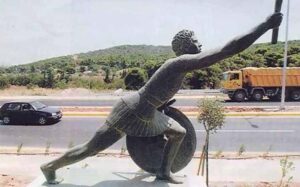exhaustion

 Imagine being able to remember every day of your life, or maybe, not being able to forget any of it. Everyone is different, and the brain is quite mysterious. Some people have vague or no specific memories about their past, while others remember all the details of their lives. Some people can even give specific days, times, and weather conditions that were present at the time of a memory. Now, some people might call that a blessing, while others might see it as a curse. Either way, it is a bit of a novelty, to say the least. The condition is called Highly Superior Autobiographical Memory (HSAM), and as of 2017, fewer than 100 people were known to have the condition. The main characteristic of the condition is that the patient has a near-perfect memory for recalling dates and events. The scientific term for Superior Autobiographical Memory is Hyperthymesia. This form of memory is sometimes confused with Eidetic Memory, which is itself mistakenly associated with photographic memory. Superior Autobiographical Memory or Hyperthymesia is a confusing phenomenon, even for scientists.
Imagine being able to remember every day of your life, or maybe, not being able to forget any of it. Everyone is different, and the brain is quite mysterious. Some people have vague or no specific memories about their past, while others remember all the details of their lives. Some people can even give specific days, times, and weather conditions that were present at the time of a memory. Now, some people might call that a blessing, while others might see it as a curse. Either way, it is a bit of a novelty, to say the least. The condition is called Highly Superior Autobiographical Memory (HSAM), and as of 2017, fewer than 100 people were known to have the condition. The main characteristic of the condition is that the patient has a near-perfect memory for recalling dates and events. The scientific term for Superior Autobiographical Memory is Hyperthymesia. This form of memory is sometimes confused with Eidetic Memory, which is itself mistakenly associated with photographic memory. Superior Autobiographical Memory or Hyperthymesia is a confusing phenomenon, even for scientists.
The first person diagnosed with HSAM was Jill Price, who in 2000 emailed Dr James McGaugh, a professor in neurobiology and behavior at UC Irvine, about her memory problem. Strange that she called it a “memory problem” and not just an unusually good memory. Price wrote, “Whenever I see a date flash on the television…I automatically go back to that day and remember where I was, what I was doing, what day it fell on…” She described the experience as “nonstop, uncontrollable, and totally exhausting.” I think that part…especially the “totally exhausting” part, is something that most people wouldn’t even consider when it comes to memory, but then we have never been faced with a situation quite like that of Jill Price.
After receiving Price’s email, Dr McGaugh started researching the condition. Like most of us, it was something he had never given much thought to. His research took a long time, because information and case studies were pretty much non-existent, but in 2010, he appeared on 60 Minutes to discuss his findings. The 60 Minutes segment caused other people to reach out to him about their own version of the condition. Among the people who reached out to him was Joey DeGrandis, who had been aware of his near-perfect memory since he was 10. DeGrandis actually took a different approach to his situation than Price had. In fact, he treated his memory somewhat like a magic trick…even performing at a school magic show by accurately naming what day of the week any date in recent history fell on. He had previously considered his memory a novelty, he changed his opinion on it after hearing about other people with the condition and decided to take part in McGaugh’s studies.
The research into HSAM showed addition things that most of us wouldn’t thing about. One thing that the research showed was that many people with HSAM also suffer with obsessive traits. DeGrandis told Time he felt his HSAM contributed to his occasional bouts of depression and anxiety, as he struggles to let go of certain things. While many people think that HSAM is the same as having a photographic memory, that is actually not the case. Oddly, people with HSAM have no advanced memory when it comes to remembering things like names or faces. DeGrandis said in a 2017 interview with Time magazine, “I’m not great with names, or with mundane details like whether I brushed my teeth today or where I put my keys.”
I guess that we will never fully understand the human mind and memory, because while I can’t even begin to claim any link between HSAM and me, I find that I do quite well with names and faces, as well as remembering 
 computer procedures (once I’m shown one time), and a pretty good aptitude for medical procedure (at least as it applies to caregiving). I consider these things, at least a little bit like a photographic memory, since I can actually picture the computer screens in my head when I’m explaining steps to take with phones or computers to my family. The mind is an amazing thing, and I doubt if we will ever fully understand all it is capable of.
computer procedures (once I’m shown one time), and a pretty good aptitude for medical procedure (at least as it applies to caregiving). I consider these things, at least a little bit like a photographic memory, since I can actually picture the computer screens in my head when I’m explaining steps to take with phones or computers to my family. The mind is an amazing thing, and I doubt if we will ever fully understand all it is capable of.
 When we think of runners, most of us are impress, and rightly so. To run a race…especially a marathon…is an amazing feat. A marathon is 26.2 miles, but do you know why that is? Supposedly, the length of the race is a “tip of the hat” to a man named Pheidippides. According to legend, Pheidippides, an Athenian soldier, witnessed the combined Athenian and Spartan army’s victory over the Persians at Marathon. Then he supposedly ran 26 miles to Athens to deliver the news. When he arrived, he informed the Athenians, and then promptly perished of exhaustion. In his honor, marathon runners run 26.2 miles to remember that amazing feat, hoping not to share his fate in doing so. Another legend claims that the extra 0.2 miles were added during the 1908 Olympics so the race would end in front of Princess Mary’s pavilion. I’m not sure about the addition of the 0.2 miles, but the reality is that Pheidippides ran a lot further than 26 miles in his “death run” to spread the news of victory.
When we think of runners, most of us are impress, and rightly so. To run a race…especially a marathon…is an amazing feat. A marathon is 26.2 miles, but do you know why that is? Supposedly, the length of the race is a “tip of the hat” to a man named Pheidippides. According to legend, Pheidippides, an Athenian soldier, witnessed the combined Athenian and Spartan army’s victory over the Persians at Marathon. Then he supposedly ran 26 miles to Athens to deliver the news. When he arrived, he informed the Athenians, and then promptly perished of exhaustion. In his honor, marathon runners run 26.2 miles to remember that amazing feat, hoping not to share his fate in doing so. Another legend claims that the extra 0.2 miles were added during the 1908 Olympics so the race would end in front of Princess Mary’s pavilion. I’m not sure about the addition of the 0.2 miles, but the reality is that Pheidippides ran a lot further than 26 miles in his “death run” to spread the news of victory.
For that reason, the real Pheidippides probably wouldn’t have been impressed with someone who ran just 26.2 miles. That would have been child’s play to him. In reality, Pheidippides ran about 300 miles over the course of two days. It’s no wonder he passed away from exhaustion at the end of such a run. Pheidippides was a hemerodromos, or a military long-distance runner. Basically, he was a courier, but these days couriers use a  bicycle or car to carry their messages. Nevertheless, in ancient times, runners were the most efficient way to transmit messages over long distances, but Pheidippides’s legendary run was much, much longer than the average run. In fact, it was a “death run.”
bicycle or car to carry their messages. Nevertheless, in ancient times, runners were the most efficient way to transmit messages over long distances, but Pheidippides’s legendary run was much, much longer than the average run. In fact, it was a “death run.”
The actual task assigned to Pheidippides was to run from Athens to Sparta to ask for more soldiers to be sent. It was a task he carried out, and the Spartans agreed. However, they refused to fight until there was a full moon, as was their battle custom. That was six days away, and would be of no help, since the loss of life by then would be too great. So, Pheidippides turned around and ran back to Athens to inform his superiors of the delay. It reportedly took him two days to cover 300 miles, and it was at the end of this run that Pheidippides expired.
Supposedly, it was a different runner entirely who ran from Marathon to Athens to deliver the news about the victory. While remaining anonymous, this runner apparently still perished at the end of his journey, which is why his shorter run is still remembered. I suppose that does make the marathon a treacherous and dangerous race. Over time, Pheidippides’s ultra-marathon was combined with the anonymous runner’s feat. Maybe they thought it was impossible for a man to run 300 miles in two days, and since I’m not runner, I really couldn’t  say. For me, while I can and have regularly walked 10 to 15 miles in a day, to run even a mile would be a likely impossibility, so I have great respect for anyone who runs any distance, much less a marathon or even a half-marathon. I am not surprised that these men died at the end of their runs. Quite possibly, their water and even food supply was somewhat limited during their runs, and since I know how tired I am after walking 10 to 15 miles, I can almost imagine the exhaustion after running a marathon or half-marathon, but to run 300 miles over two days, well suffice it to say I would have dropped before the first day ended…which is probably why I don’t run…unless it is to get away from danger, hahaha!!
say. For me, while I can and have regularly walked 10 to 15 miles in a day, to run even a mile would be a likely impossibility, so I have great respect for anyone who runs any distance, much less a marathon or even a half-marathon. I am not surprised that these men died at the end of their runs. Quite possibly, their water and even food supply was somewhat limited during their runs, and since I know how tired I am after walking 10 to 15 miles, I can almost imagine the exhaustion after running a marathon or half-marathon, but to run 300 miles over two days, well suffice it to say I would have dropped before the first day ended…which is probably why I don’t run…unless it is to get away from danger, hahaha!!
 All too often, there are people in our lives who work hard, help others, and sadly, get very little appreciation. They just do what they do, because they are needed. My sister-in-law, Brenda is one of those people. She has a job that requires her to put in many more hours than most people work…sometimes from 8 in the morning to 10 at night. That in itself would be enough to exhaust most people, and it exhausts her too, but when she gets off work, her first concern is her aging parents. She also calls them several times throughout the day to make sure they are ok.
All too often, there are people in our lives who work hard, help others, and sadly, get very little appreciation. They just do what they do, because they are needed. My sister-in-law, Brenda is one of those people. She has a job that requires her to put in many more hours than most people work…sometimes from 8 in the morning to 10 at night. That in itself would be enough to exhaust most people, and it exhausts her too, but when she gets off work, her first concern is her aging parents. She also calls them several times throughout the day to make sure they are ok.
Her mother, my mother-in-law has Alzheimer’s Disease and Chronic Bronchitis, and her dad, my father-in-law has Emphysema. They still live at home, and my father-in-law is my mother-in-law’s primary caregiver. With his own problems, he cannot do this alone, nor would we want him to. We have a great group of family members who help out, but today I want to talk about Brenda. She spends as much time as possible helping them, and I know that they greatly appreciate it.
With her busy schedule, trying to find the extra time for caregiving can be a huge struggle, and that is just the time struggle. There is also the emotional struggle…wanting to be there and yet needing to have your own time too. How do you live with yourself, for needing that time? It is the question that every caregiver lives with every day, because every moment used on self makes you feel guilty, even if you desperately need it. And yet, your body and mind are screaming for a few moments to just stop.
When the times occur that require extra time, it is even more tearing because you know that you are giving all you have, and somehow you will need to dig deeper, to find more. And…you want to because you love them. So the struggle comes when you need to give more time, but there simply is no more time to give. Sometimes, no solution exists. We just have to keep on keeping on. And that is what Brenda does. In the face of the hardest struggles, and the total exhaustion, the guilt over time for self, she just keeps on keeping on.

